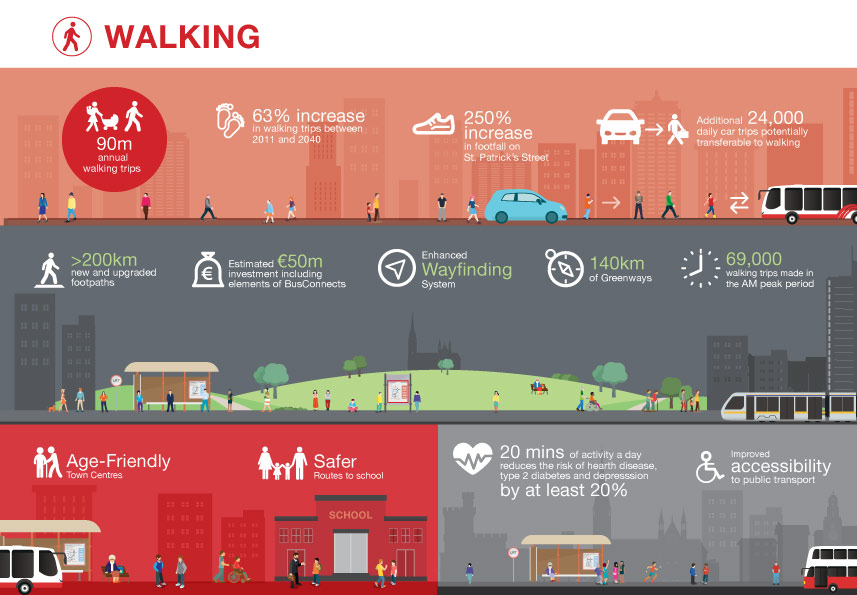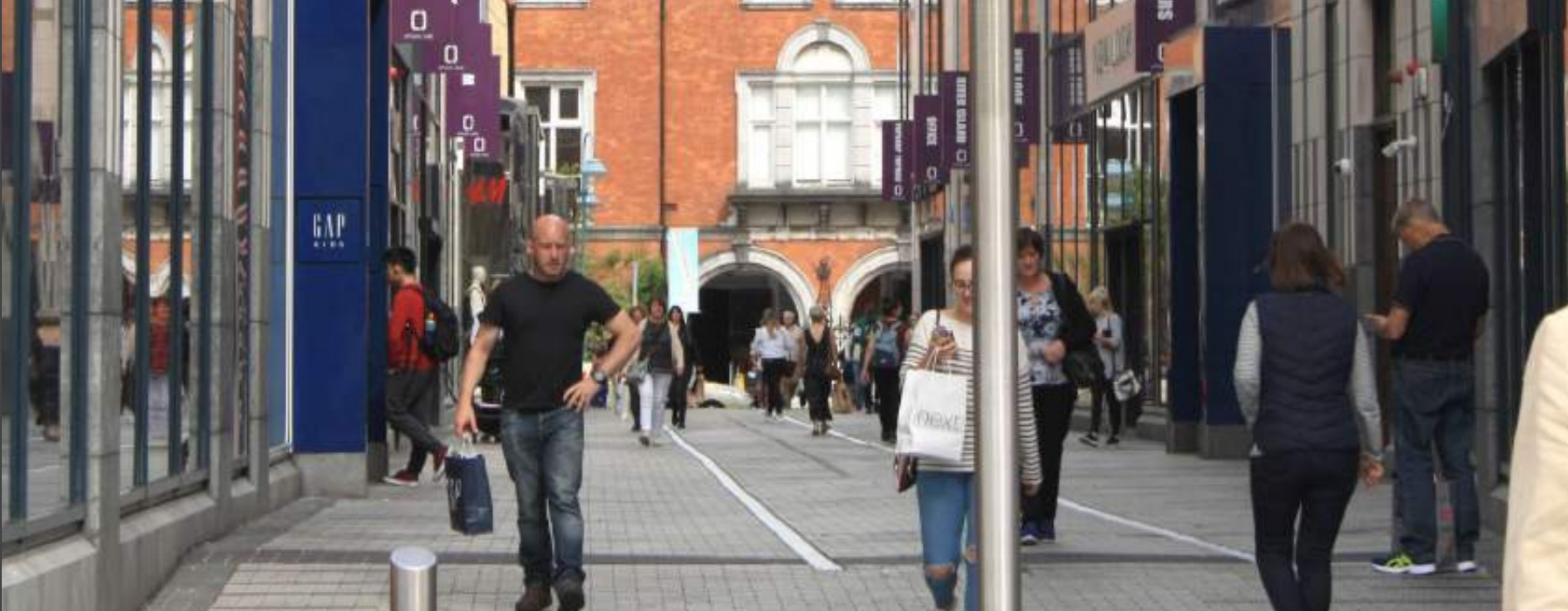All journeys begin and end by walking irrespective of other modes used. A range of high quality, public realm improvements have been implemented in recent years to include pedestrian priority areas, wider footways and improved crossing facilities in Cork City Centre and Ballincollig Town Centre and resulted in a reasonably high quality walking environment and increased footfall and vitality in many of its streets.
However, the quality of the pedestrian environment is inconsistent across the CMA with a range of barriers to walking including street clutter, insufficient footpath widths and crossing opportunities. Cork, with its relatively compact City Centre and reasonably self-sufficient Metropolitan Towns, has significant potential to enhance the pedestrian experience to enhance the pedestrian experience. Walkability Audits will be carried out with a view to assessing footway widths, public lighting, wayfinding, permeability and removing street clutter in the early part of the Strategy.
Key outcomes for walking in the Strategy include:
- An increase in walking levels for work, education and leisure across the CMA, particularly for short journeys (less than 2-3km);
- Address the barriers that prevent citizens and visitors from walking more in Cork;
- The creation of an attractive, safe, fully permeable and accessible environment for all ages and abilities in line with DMURS and Universal Design principles;
- Facilitate walking’s role as part of linked trips, particularly with rail and bus journeys;
- Promote a far higher standard of urban design in new developments, and in highway design, in a fashion that consistently prioritises pedestrian movement and safety over that of the private car; and
- Upgrade pedestrian network in tandem with the implementation of BusConnects, Cycle Network and Light Rail stations. The over-arching objective for walking is to ensure that the pedestrian environment is significantly enhanced, more attractive, accessible and safer than at present. Walking will be an instinctive choice for short trips across the CMA including school trips, leisure trips and as part of linked trips with public transport.
Walking Network Improvements
The Cork Walking Strategy 2013-2018 provides a clear vision and implementation plan for increasing the modal share of walking for commuting within Cork City’s suburbs.
The Walking Strategy proposed the development of a walking network that connects neighbourhoods, origins and destinations, increases the permeability of the built environment, and creates an attractive, safe environment that prompts more people choosing to walk, resulting in a healthier population, a more liveable and sustainable city, and stronger communities.
Much of the focus areas for improvement identified in the Walking Strategy remain relevant and have been adapted here for the purposes of the wider metropolitan area and the longer-term horizon of CMATS:
- Network Development of the primary pedestrian network throughout the city;
- Neighbourhood infrastructure to enhance the attractiveness, safety and accessibility for all pedestrians;
-
Behavioural Change initiatives that promote walking; ƒ Collaboration between stakeholders;
- Upgrade walking provision in tandem with BusConnects corridor improvements, light rail stations development and Cycle Network Implementation; and
- Upgrade pedestrian network in tandem with those proposed for the cycle network to minimise conflicts in shared spaces such as greenways and quietways

